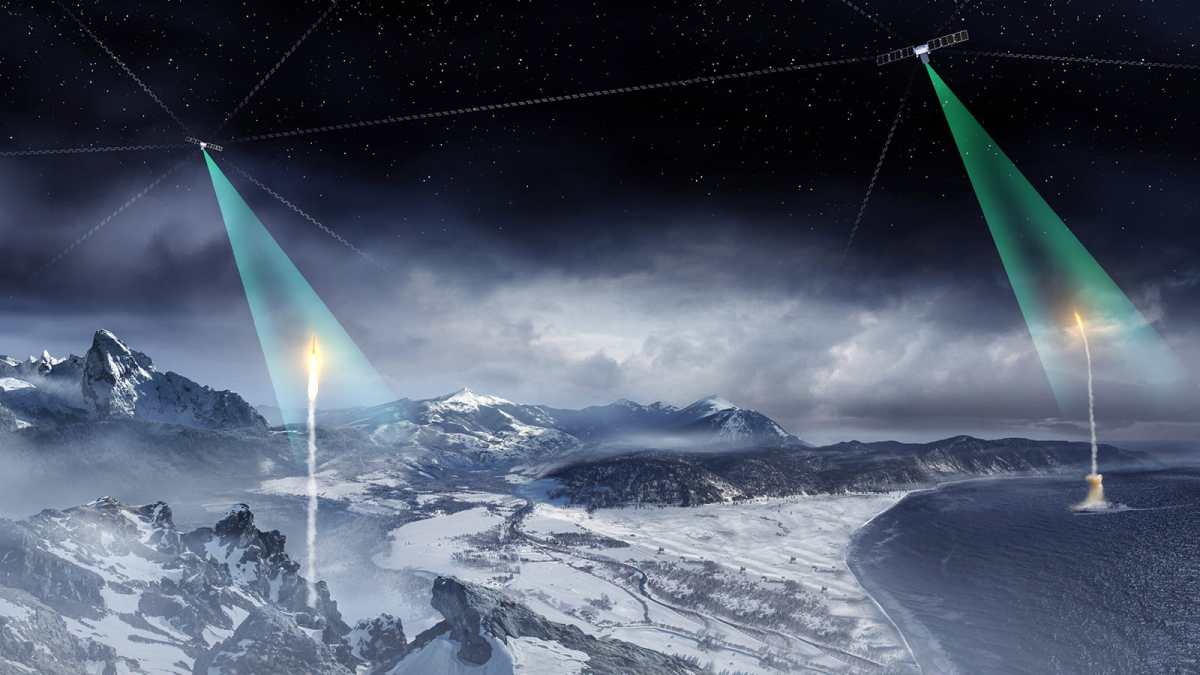Space Force mitigating potential capability loss for MEO missile-tracking program after RTX’s exit

NATIONAL HARBOR, Md. — The Space Force’s acquisition arm is working to ensure there is “no loss of capability” in its space-based missile warning and missile-tracking program following the removal of RTX subsidiary Raytheon from the effort earlier this year, according to the program’s executive officer.
Space Systems Command (SSC) dropped Raytheon from the Resilient Missile Warning and Tracking — MEO (MEO MW/MT) program in May due to significant cost growth, slips in launch schedule and unresolved design challenges experienced by the company. Raytheon was originally contracted in 2021 to build three space vehicles for the missile-warning constellation’s first batch of satellites, known as Epoch 1.
As SSC prepares to launch the remaining Epoch 1 systems and receives proposals for the subsequent Epoch 2 space vehicles, officials are exploring how to make up for the capability lost by dropping Raytheon from the contract, Col. Rob Davis, PEO for the command’s space sensing directorate, said Wednesday during a media roundtable at AFA’s Air, Space and Cyber conference.
“We have plans to go ahead and make sure we don’t have a loss of capability in Epoch 1. We expect to have equivalent capabilities in the requirements being satisfied with Epoch 1,” Davis said. “Flowing into Epoch 2, that [request for proposals] is on the street. We’re tracking that, eagerly waiting to get those back and seeing where that takes us to finish out the initial warfighting capability of that constellation.”
The MEO MW/MT constellation is being developed to track high-speed missiles from medium-Earth orbit (MEO) as part of the Space Force’s plans to build a resilient architecture of missile warning and missile-tracking satellites across multiple orbits.
SSC is leveraging a spiral development model for the program by developing and fielding the systems in “epochs” that each deliver incremental capability — similar to the strategy used by the Space Development Agency for its Proliferated Warfighter Space Architecture (PWSA). The intent is to have the MEO MW/MT constellation work with the PWSA birds in low-Earth orbit and other satellites in higher orbits to track advanced missile threats from space.
Boeing subsidiary Millennium Space Systems was also contracted in 2021 to build six satellites for the constellation. Later in 2023, L3Harris received an award to complete sensor payload design for Epoch 1. SSC expects to launch the six Epoch 1 vehicles — which will provide initial missile-warning capability — by 2027.
Bob Fitzpatrick, vice president of requirements and capabilities at Raytheon, told DefenseScoop that moving forward, the company is able to carry the development work it did on Epoch 1 into its proposal for future phases of the MEO MW/MT program.
“We actually worked hand in hand with [SSC] to really develop a good point to kind of bring it to closure, because we saw how much it was going to do for our business but equally for what they wanted to do,” Fitzpatrick said Tuesday on the sidelines of the AFA conference. “It actually turned out to be very positive for both of us, and we are now looking at leveraging that technology for the Epoch 2 series.”
In August, SSC released a request for prototype proposals for development and procurement of up to 18 space vehicles for Epoch 2. The satellites will build upon the Epoch 1 birds and be able to track advanced hypersonic and ballistic missile threats, according to the solicitation.
Davis noted that the Epoch 2 platforms will carry “in-plane, vendor-specific crosslinks,” meaning the space vehicles will only be able to share data and communicate with those made by the same company located in MEO. Once the contracts are awarded, it’s possible SSC will look into an additional crosslink to advance the technology.
“From a tech maturation [standpoint], we’re really looking to Epoch 3 to have that technology ready to support where we really want to get to — that point where we’re meshing between vendors,” Davis said.



